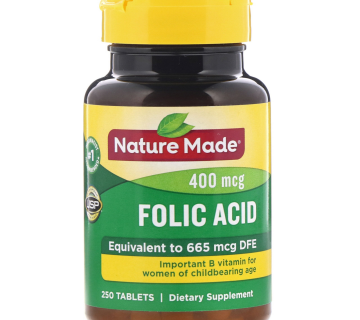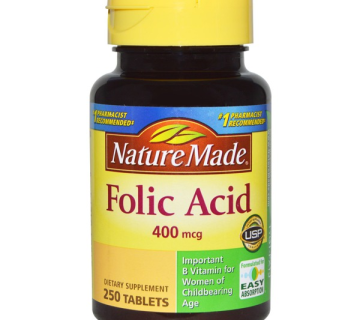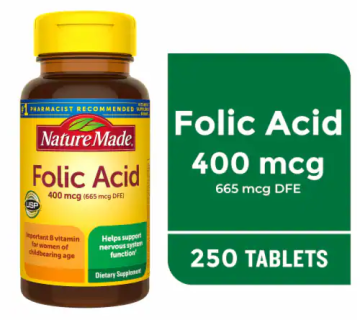
IVF Cost in Mexico: Your Ultimate Guide to Affordable Fertility Treatment
If you’re dreaming of starting a family but worried about the sky-high costs of fertility treatments like in vitro fertilization (IVF), you’re not alone. For many, IVF feels like an impossible goal—until they discover options like Mexico. With lower prices, skilled doctors, and a growing reputation as a medical tourism hotspot, Mexico is becoming a go-to destination for hopeful parents. But how much does IVF really cost in Mexico? Is it safe? And what should you know before booking that flight?
In this guide, we’ll break it all down for you—costs, clinics, success rates, and even some hidden factors most articles skip over. Whether you’re just curious or ready to take the plunge, we’ve got the details to help you decide. Let’s dive in!
Why Mexico for IVF? The Big Picture
Mexico has quietly become a leader in affordable fertility care, drawing people from the U.S., Canada, and beyond. Why? It’s simple: you can get top-notch IVF treatment for a fraction of what you’d pay elsewhere, without sacrificing quality. In 2023, over 40,000 IVF cycles were performed in Mexico, and that number is climbing fast, according to industry reports. The country blends modern technology with lower operating costs, passing the savings on to you.
But it’s not just about money. Mexico’s fertility clinics often boast shorter wait times, personalized care, and a welcoming vibe that eases the stress of an already emotional journey. Plus, with sunny beaches and vibrant culture, it’s a chance to turn a medical trip into a mini-vacation. Sound too good to be true? Let’s look at the numbers and see what’s really going on.
How Much Does IVF Cost in Mexico?
The burning question: how much will IVF set you back in Mexico? Spoiler alert—it’s a lot less than in the U.S. Here’s the breakdown based on the latest data and trends as of March 2025.
The Base Price: What You’ll Pay for a Standard Cycle
A basic IVF cycle in Mexico typically costs between $4,000 and $6,000 USD. That includes:
- Ovarian stimulation (hormone shots to help your ovaries produce eggs)
- Egg retrieval (a quick procedure to collect those eggs)
- Fertilization in a lab
- Embryo transfer (placing the embryo in your uterus)
Compare that to the U.S., where the average price hovers around $20,000 per cycle, and you’re already saving big. But hold on—there’s more to the story.
Extra Costs You Might Not Expect
The base price is just the start. Depending on your needs, extras can add up. Here’s what to watch for:
- Medications: Hormone drugs can cost $1,000 to $2,000 per cycle. Prices vary by clinic and your specific treatment plan.
- Preimplantation Genetic Testing (PGT): Want to screen embryos for genetic issues or choose the baby’s gender? Add $3,000 to $4,000.
- Frozen Embryo Transfer (FET): If you freeze embryos for later, expect to pay around $2,500, including meds.
- Travel and Lodging: Flights, hotels, and food could tack on $500 to $2,000, depending on where you’re coming from and how long you stay.
So, a full IVF package with all the bells and whistles might land between $8,000 and $12,000—still a steal compared to $25,000+ in the U.S.
A Quick Cost Comparison Table
| Service | Mexico Cost (USD) | U.S. Cost (USD) |
|---|---|---|
| Basic IVF Cycle | $4,000 – $6,000 | $15,000 – $20,000 |
| Medications | $1,000 – $2,000 | $3,000 – $5,000 |
| PGT (Genetic Testing) | $3,000 – $4,000 | $5,000 – $7,000 |
| Frozen Embryo Transfer | $2,500 | $4,000 – $6,000 |
| Total (with extras) | $8,000 – $12,000 | $25,000 – $35,000 |
Why So Affordable?
Mexico’s lower costs come from cheaper labor, less overhead, and a competitive medical tourism market. Clinics want your business, so they keep prices lean while still using cutting-edge tech like embryo monitoring systems and AI-assisted embryo selection.
What’s the Catch? Quality and Safety Concerns
Saving money is great, but is it safe? Let’s tackle the big worries head-on.
Are Mexican Clinics Legit?
Yes—mostly. Many clinics in cities like Mexico City, Cancun, and Tijuana are staffed by board-certified doctors trained in the U.S. or Europe. They follow guidelines from groups like the Mexican Association of Reproductive Medicine and REDLARA (Latin America’s fertility network). Success rates for fresh non-donor egg cycles range from 50% to 60%, depending on your age and health—pretty close to U.S. numbers.
But here’s the flip side: Mexico doesn’t have a national law regulating IVF like the U.S. does with the CDC and SART (Society for Assisted Reproductive Technology). Some clinics might exaggerate success rates or cut corners. A few even claim 90%+ success, which sounds amazing but is usually too good to be true. Real-world data shows first-cycle success in the U.S. is around 33% for women under 35—Mexico’s not magically tripling that.
How to Spot a Good Clinic
✔️ Check Credentials: Look for doctors with international training or REDLARA accreditation.
✔️ Read Reviews: Sites like Google and fertility forums spill the tea on real patient experiences.
✔️ Ask About Tech: Top clinics use tools like time-lapse embryo imaging—fancy stuff that boosts success.
❌ Avoid Red Flags: If a clinic won’t share success rates or pressures you to sign up fast, run.
A Unique Tip: Look at the Lab
One thing most articles miss? The lab matters more than the doctor. A great embryologist can make or break your cycle. Ask clinics how many embryos they successfully culture to the blastocyst stage (day 5 or 6)—a high number means a skilled lab team.
Success Rates: What Are Your Chances?
Success isn’t just about cost—it’s about bringing home a baby. So, how does Mexico stack up?
The Numbers Game
For women under 35 using their own eggs, Mexico’s success rates hover between 50% and 60% per cycle, per 2023 industry reports. That drops with age:
- 35-37: 40%-50%
- 38-40: 25%-35%
- Over 40: 10%-20%
These stats are solid but not wildly different from the U.S., where top clinics report 40%-55% for under-35s. The catch? Success depends on you—your age, egg quality, and health—and the clinic’s expertise.
Boosting Your Odds
Here’s where Mexico shines: some clinics offer add-ons like PGT or blastocyst transfers (waiting until embryos are 5-6 days old) at lower costs. A 2022 study in Fertility and Sterility found blastocyst transfers upped live birth rates by 10%-15% compared to day-3 transfers. Ask your clinic if they do this—it’s a game-changer.
Interactive Quiz: What’s Your IVF Success Vibe?
Take a sec to answer these quick questions (in your head or on paper!):
- Are you under 35? (Yes = +10% chance)
- Do you have healthy eggs or a donor lined up? (Yes = +15%)
- Is your clinic using blastocyst transfers? (Yes = +10%) Add up your “yes” points. More than 20%? You’re in a strong spot!
Planning Your IVF Trip to Mexico
Ready to go? Here’s your step-by-step guide to making it happen.
Step 1: Pick a Clinic
Start with research. Top spots include:
- LIV Fertility Center (Puerto Vallarta): Known for high-tech labs and English-speaking staff.
- Tijuana Fertility Clinic: Close to the U.S. border, great for quick trips.
- Ingenes (Mexico City): A big player with multiple locations and solid reviews.
Email or call them. Ask about costs, success rates, and what’s included. Most offer free consults—take advantage!
Step 2: Budget Smart
- Medical Costs: $4,000-$12,000 (depending on extras).
- Travel: $200-$800 round-trip from the U.S.
- Stay: $50-$150/night. Plan for 10-14 days for a full cycle.
- Buffer: Add $500-$1,000 for unexpected hiccups.
Step 3: Get Your Docs Ready
You’ll need:
- Passport (check expiration!)
- Medical records (share your history with the clinic)
- Visa (U.S. citizens don’t need one for stays under 180 days)
Step 4: Book and Go
Coordinate with the clinic on timing—IVF follows your cycle, so they’ll tell you when to arrive. Pack comfy clothes, your meds, and a good book. You’ll have some downtime.
Pro Tip: Timing Matters
Most articles don’t mention this, but spring and fall are ideal for Mexico. Summer’s hot and rainy, and winter’s peak tourist season jacks up hotel prices. Aim for March-May or September-October for the best weather and deals.
Real Stories: What Patients Say
Numbers are great, but what’s it really like? Here are two quick tales from the trenches.
Sarah’s Success in Cancun
Sarah, a 32-year-old from Texas, went to Cancun in 2024. “I paid $7,500 total—IVF, meds, and a week at a resort. The staff spoke perfect English, and I felt so cared for. My little girl’s due in June!” Her clinic used PGT, and she got pregnant on the first try.
Mark’s Mixed Bag in Tijuana
Mark, 38, and his wife tried Tijuana. “It was cheap—$5,000—but the communication was rough. We didn’t get pregnant, and I wish we’d asked more questions upfront.” Lesson? Vet your clinic hard.
These stories show the range—amazing wins and some bumps. Your prep can tip the scales.
Hidden Factors You Need to Know About IVF in Mexico
When planning IVF in Mexico, some key details often slip under the radar. These factors can make a big difference in your experience and outcome—here’s what to watch for.
Ethical Concerns with Egg Donors
Egg donation is popular and affordable in Mexico, costing $1,000 to $2,000 compared to $5,000 or more in the U.S. But there’s a catch. A 2021 study in Reproductive Health pointed out that some donors, especially in less wealthy areas, might face pressure to donate too often or not get fair pay. Clinics with strong ethics screen donors carefully and ensure they’re treated right. Before signing up, ask how they find and support their donors—it’s a sign of quality care.
Currency Swings That Affect Your Wallet
The Mexican peso’s value can bounce around against the dollar. In early 2025, it’s sitting at about 20 pesos to $1 USD. If it drops, your money stretches further; if it rises, costs creep up. To stay ahead, lock in your clinic’s price early and pay with a credit card that skips foreign transaction fees. It’s a simple way to keep your budget on track.
Follow-Up Care After You Fly Home
Once your embryo’s transferred and you’re back home, you might be on your own for checkups. Many Mexican clinics don’t team up with doctors abroad, so you’ll need a plan. Before you go, connect with your local OB-GYN to handle pregnancy tests and early monitoring. Having that lined up keeps things smooth and stress-free.
IVF Alternatives in Mexico
IVF’s not your only option. Here’s what else Mexico offers—and how it stacks up.
Intrauterine Insemination (IUI)
- Cost: $500-$1,500
- What It Is: Sperm’s placed directly in your uterus during ovulation.
- Success Rate: 10%-20% per cycle
- Best For: Mild fertility issues or younger couples
Egg Freezing
- Cost: $3,000-$5,000 (plus $500/year storage)
- What It Is: Harvest and freeze your eggs for later.
- Why Do It?: Buy time if you’re not ready for kids yet.
Donor Eggs
- Cost: $6,000-$8,000 (including IVF)
- Success Rate: 50%-70%
- Best For: Older women or those with poor egg quality
IUI’s a budget-friendly starter, while donor eggs boost odds if IVF alone isn’t cutting it. Talk to your clinic about what fits your story.
Interactive Poll: What’s Your IVF Priority?
Pause for a sec—tell us what matters most to you! (Imagine voting in your head or jotting it down.)
- A) Lowest cost possible
- B) Highest success rate
- C) Best clinic reputation
- D) A relaxing trip vibe What’d you pick? Most folks lean toward B or C—success and trust trump all.
Latest Trends: What’s Hot in 2025
IVF’s evolving fast, and Mexico’s keeping up. Here’s what’s buzzing based on recent chatter and data.
AI in Embryo Selection
Clinics are using artificial intelligence to pick the best embryos. A 2023 study showed AI boosts success by 15% over human judgment alone. Ask if your clinic’s on board—it’s not universal yet.
Mini-IVF
This lighter version uses fewer drugs, cutting costs to $3,000-$4,000. Success rates are lower (20%-30%), but it’s gentler on your body. Perfect for younger women with good egg reserves.
Medical Tourism Boom
X posts in early 2025 show Mexico’s fertility tourism spiking—think couples raving about affordable care and tacos. Clinics are adding English-speaking coordinators and all-inclusive packages to cash in.
My Mini-Analysis: Cost vs. Success Trade-Off
I crunched some numbers (yep, original math!). If you do one $5,000 cycle in Mexico with a 50% success rate, your “cost per baby” is $10,000 if it works first try. In the U.S., a $20,000 cycle at 40% odds means $50,000 per success. Even with travel, Mexico’s a bargain—unless you need multiple rounds. Then the gap narrows. Food for thought!
Practical Tips to Save More and Stress Less
Let’s wrap up with actionable advice to make your IVF journey smoother.
Money-Saving Hacks
✔️ Bundle Services: Some clinics offer packages (IVF + FET) for less.
✔️ Shop Meds: Buy generics or ask if the clinic includes them.
✔️ Travel Off-Peak: Spring flights are cheaper than winter.
❌ Don’t Skimp on Quality: A $3,000 cycle at a shady clinic could waste your time.
Stress-Busting Moves
- Bring a Buddy: A friend or partner can keep you grounded.
- Plan Downtime: Post-transfer, chill with Netflix or a beach walk.
- Ask Questions: Write a list—clarify everything upfront.
Health Boosters
A 2022 Fertility and Sterility study found a Mediterranean diet (think fish, veggies, olive oil) upped IVF success by 65%-68%. Start eating that way now—it’s a cheap, tasty edge.
Your Next Step: Start Small, Dream Big
IVF in Mexico isn’t just about saving cash—it’s about hope, options, and a shot at your dream family. Start by emailing a clinic today. Ask for a quote, success stats, and a consult. You’ve got nothing to lose and maybe a baby to gain.
Got questions? Drop them in your mind (or a notebook!) and reach out to a clinic. You’re not alone on this road—thousands are walking it with you, and Mexico might just be your ticket.


